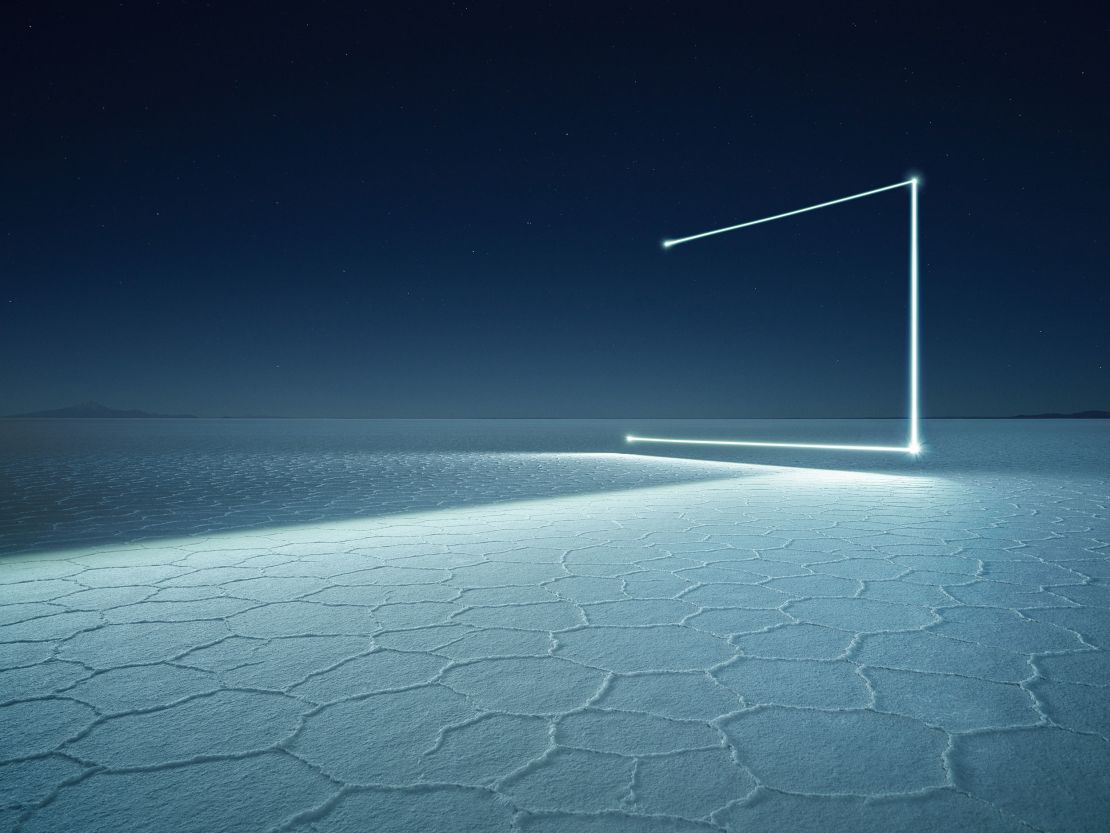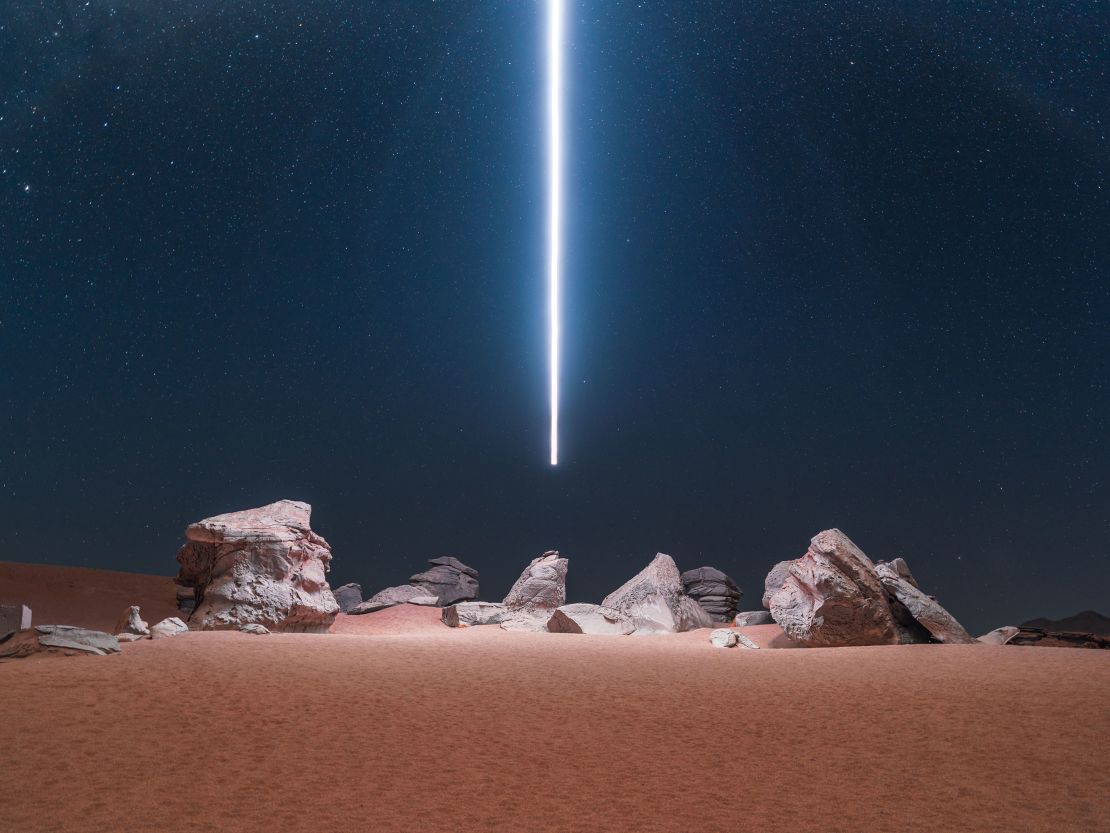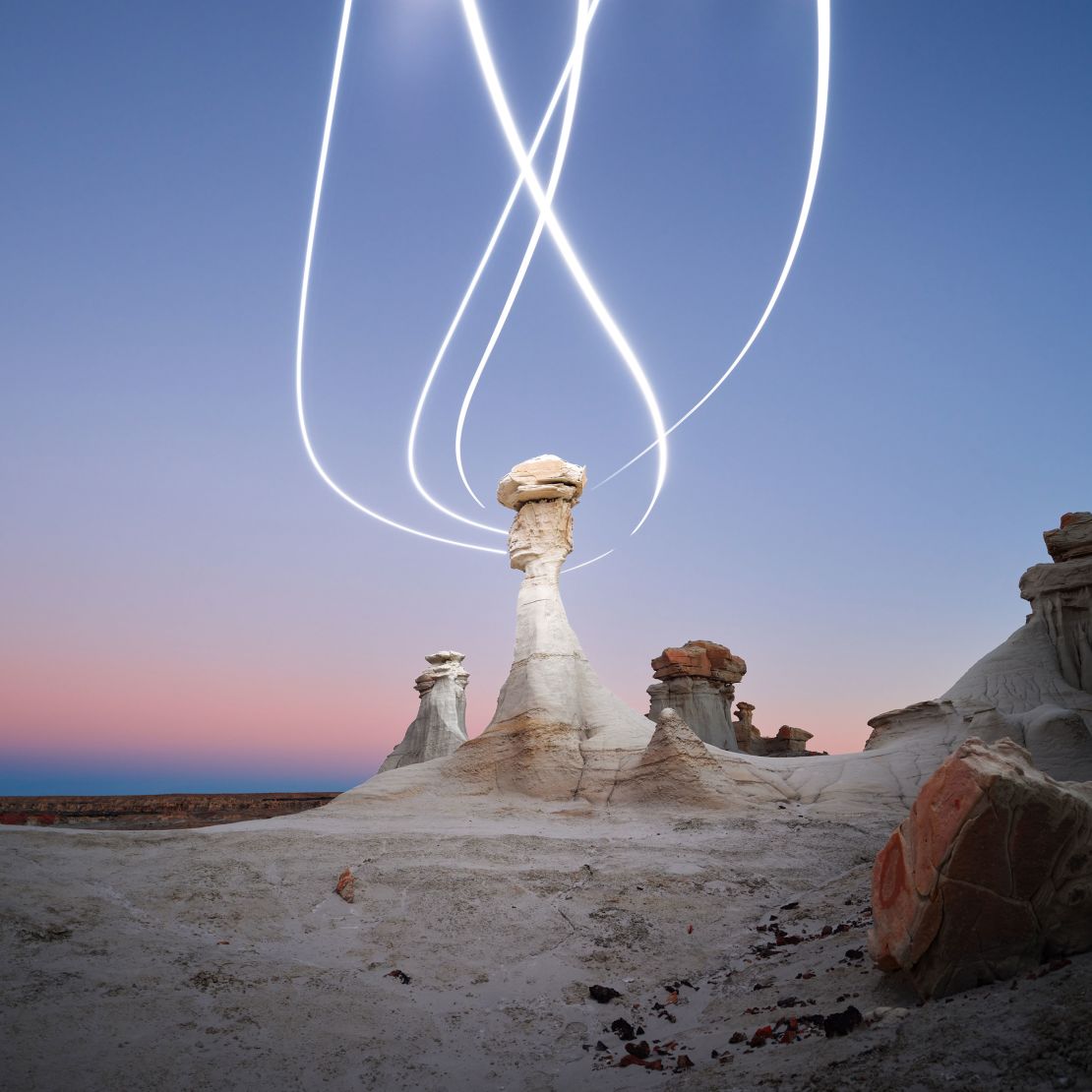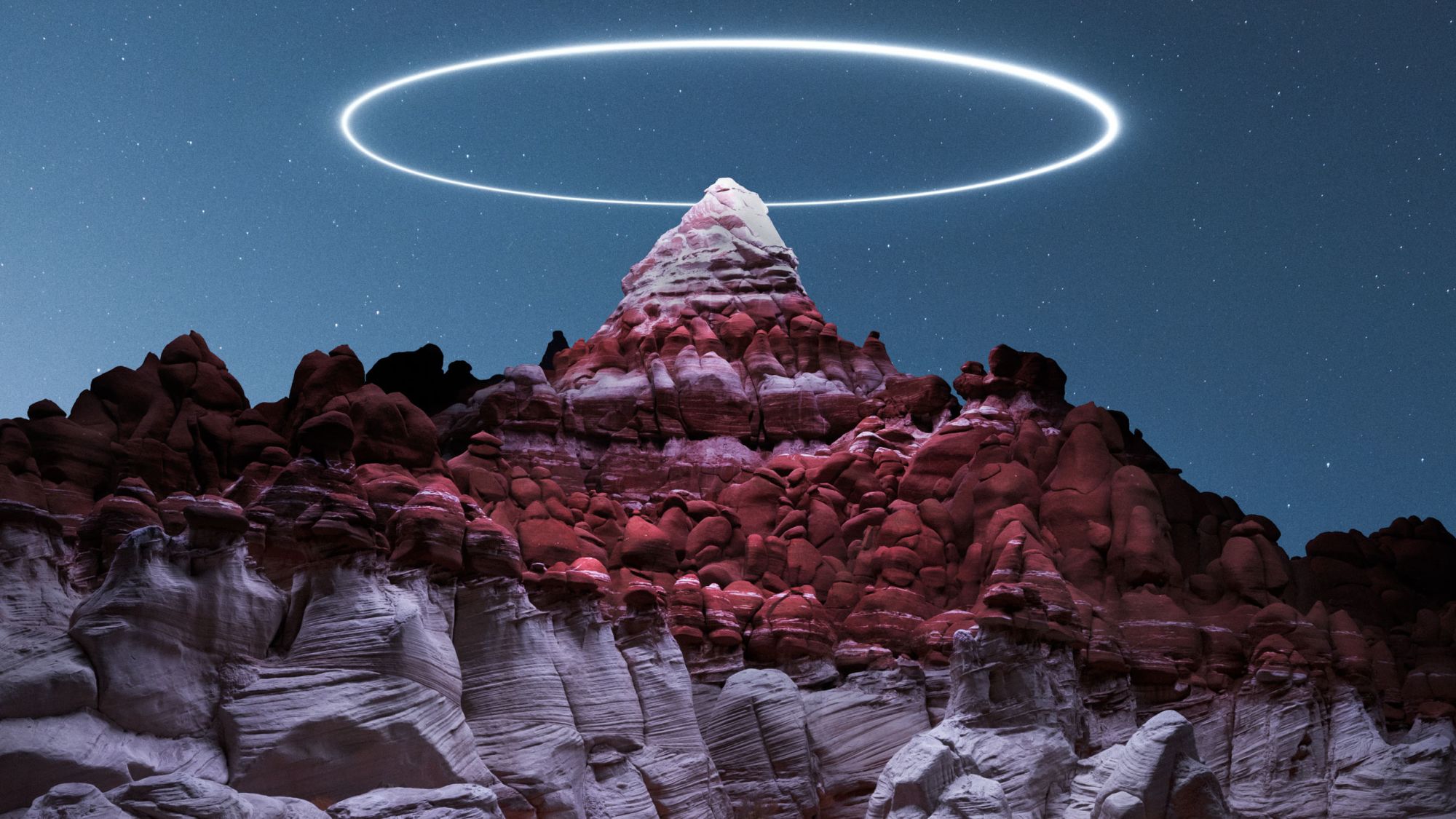The first time Reuben Wu saw the warm sandstone hues and vast, open skies of the American West, he was watching the landscapes pass him by from the window of a tour bus.
The British visual artist, now based in Chicago, has become known for his sublime imagery of remote landscapes using drone lighting, enhancing craggy peaks with halos, or writing glyphs in the sky like signals from a supernatural entity. But for a long time, art was just a passion project while he focused on a music career as one of the four members of the synth-pop band Ladytron.
“(Photography) started as an all-consuming hobby,” he explained in a phone interview. But when Ladytron took a break in 2011 after five studio albums (they released a self-titled sixth album in 2019, and the seventh, “Time’s Arrow,” this month), he began a new career from scratch. “While the others did their own solo projects, making their own music and releasing their own albums, this was my solo project.”
Wu’s imagery takes a classic photographer’s combination — light and landscape — and marries the two in transformative ways. He often begins with dusky evening light or the ink-black shadows of night, then strategically illuminates portions of the scene with custom-built consumer drones. In one image, a bright horizontal line hangs over a glacier in the Peruvian Andes, revealing the brilliance of the ice against a dark sky. In a different motion piece, Wu simulated an electrical storm in Goblin Valley, Utah, but with perfectly straight strikes of light rather than the jagged bursts of lightning.
The artist’s 2018 photo book “Lux Noctis” is in the collections of the Guggenheim and Museum of Modern Art, in New York, and he has shot commercial work for Apple, Audi and Google as well as the DJ and music producer Zedd. Last summer, Wu revealed a colossal project for National Geographic: a cover story and timelapse multimedia piece about Stonehenge, which featured the enigmatic monument lit by his custom drones. In November, one of his NFTs, a 4K video loop titled “An Irresistible Force,” outperformed its high estimate by over 25% during an auction at Sotheby’s Hong Kong, selling at 441,000 HKD (about $56,500).
“I couldn’t have dreamed of where I am now,” Wu said. “I just wanted to be able to make a living from doing art and from doing photography.”
Alien inspiration
Wu has always been drawn to wild, remote places where he could find solitude. His parents immigrated from Hong Kong to the UK before he was born, and he grew up an introverted child in Liverpool, he said, who didn’t quite click with school. He was fascinated with science-fiction films that mix the alien with the everyday, such as Steven Spielberg’s “Close Encounters of the Third Kind,” which featured Wyoming’s Devils Tower as a site for extraterrestrial contact. (Unfamiliar with American topography, he initially thought the butte, a national monument, was a fictional geological entity, he explained with a laugh).
The film’s visuals of remote desert scenes mixed with eerie lights have been a formative inspiration in his own work. “(It’s) cemented into my brain, the idea of these seemingly impossible lights moving through the sky, kind of like search lights on very ordinary (American) landscapes,” he said.

He embarked on his first cross-country photography trip across the US in 2013, around a decade after getting a taste on the road with Ladytron. The resulting series featured vivid depictions of the Grand Canyon and South Dakota Badlands, as well as a time-lapse image of Devils Tower at night among star trails.
Two years later, Wu discovered the effect that drone lighting could have on the natural world while working on an outdoor automotive shoot.
“I flew the drone up above some cliffs, and I was absolutely fascinated by the effect it had on the actual landscape,” he explained. It made the cliffs glow, reaching areas that were otherwise impossible to light artificially.

Wu rigs lights on drones to suit his needs on any given shoot or project. The first iteration, he said, which he used when the technology was still nascent, was a “massive” eight-rotor drone outfitted with homemade lights that only had about eight minutes of flight time. The next used a 3D-printed bracket with an LED hot light, but still only gave him an additional two minutes in the air. The tech he uses now gives him a bit more breathing room, with a half hour to fly out, capture images and return to him, but he’s had to learn to work within the bounds of each set-up.
“I’m a lot less anxious now, because I’ve crashed a number of drones,” he said. “And in the end, they’re just tools.”
Experimental series
After developing series of still images such as “Lux Noctis” and “Aeroglyphs,” which experiment with ghostly lighting and geometric shapes in the skies, Wu found himself wanting to incorporate motion and sound into his work because of his own background in music. He began creating 15-second video loops from his images, showing light beams forming patterns or the moon arcing across the sky, to the beats of atmospheric electronic music that he produced.
“These (works) were very much experimental and had no end goal — they were just things that I did for love out of love,” he said. “I couldn’t license them, I couldn’t print them… and so they were just there, stacking likes on my Instagram.”

But in January 2021, Wu found a way to make them a more substantial part of his career when he was introduced to NFT art. He minted his first “non-fungible token” on the marketplace Foundation two months later — an “aeroglyph” of bright lines forming a rectangle above a beachside cliff. It sold for 30 ETH ($45,000), a portion of which he donated to the National Parks Conservation Association and the AAPI Community Fund. Later that year, the web3 arts organization Obscura commissioned him to produce a new set of images titled “Aeroglyph Variations,” which took him into the New Mexico badlands for a 20-hour shoot that resulted in 55 images of the same setting, each with different lighting conditions and patterns. Wu has also experimented with presenting the work in different ways, from animations, to AR experiences, to projection mapping moving images onto physical prints.
“It’s very much a hybrid medium, and so I’d like to expand that horizon even more, and think about the end goal for my work,” he said. “Am I creating a nice piece of art for people to look at and appreciate, or am I creating an experience for people to share?”
Wu is leaning towards the latter as he continues to experiment with the form his work takes, but no matter the medium, his vision of and approach to the natural world remains consistent.
“A lot of people always say that my work is otherworldly — that is the first word that people think of when they think about my work,” he said. “But I’m not trying to create an alien-looking image; I’m trying to show that this is our planet. And there are so many new ways that are available to see it that can renew your perspective.”
